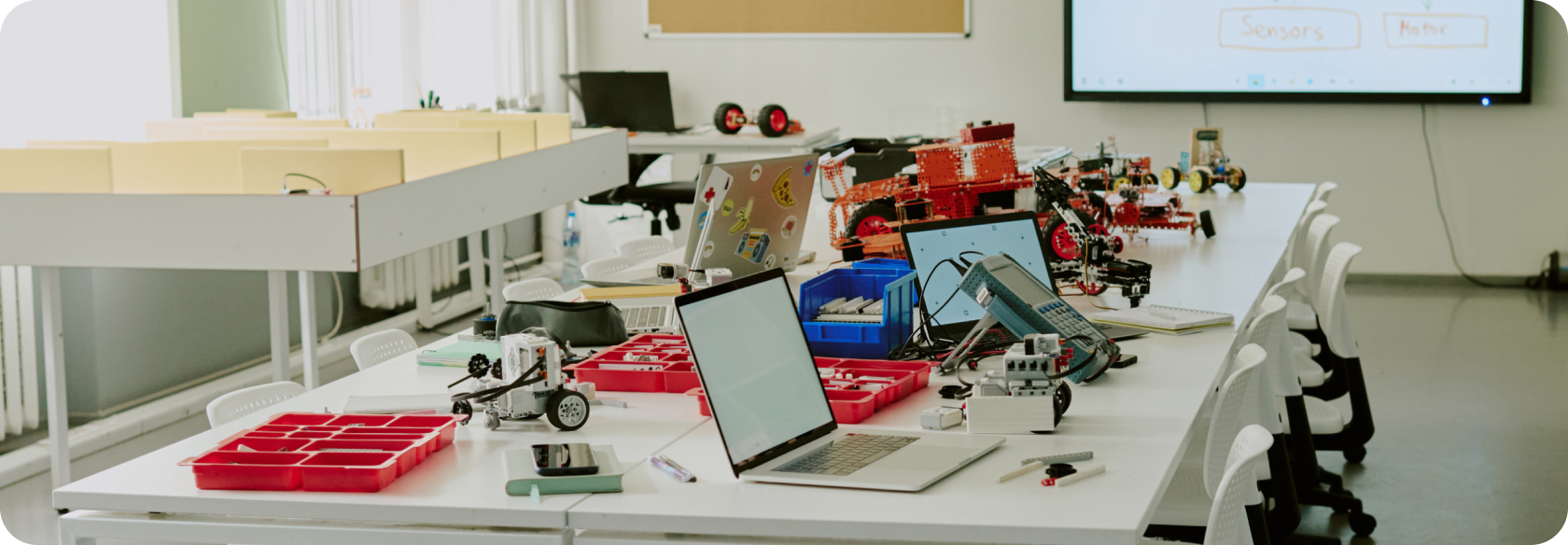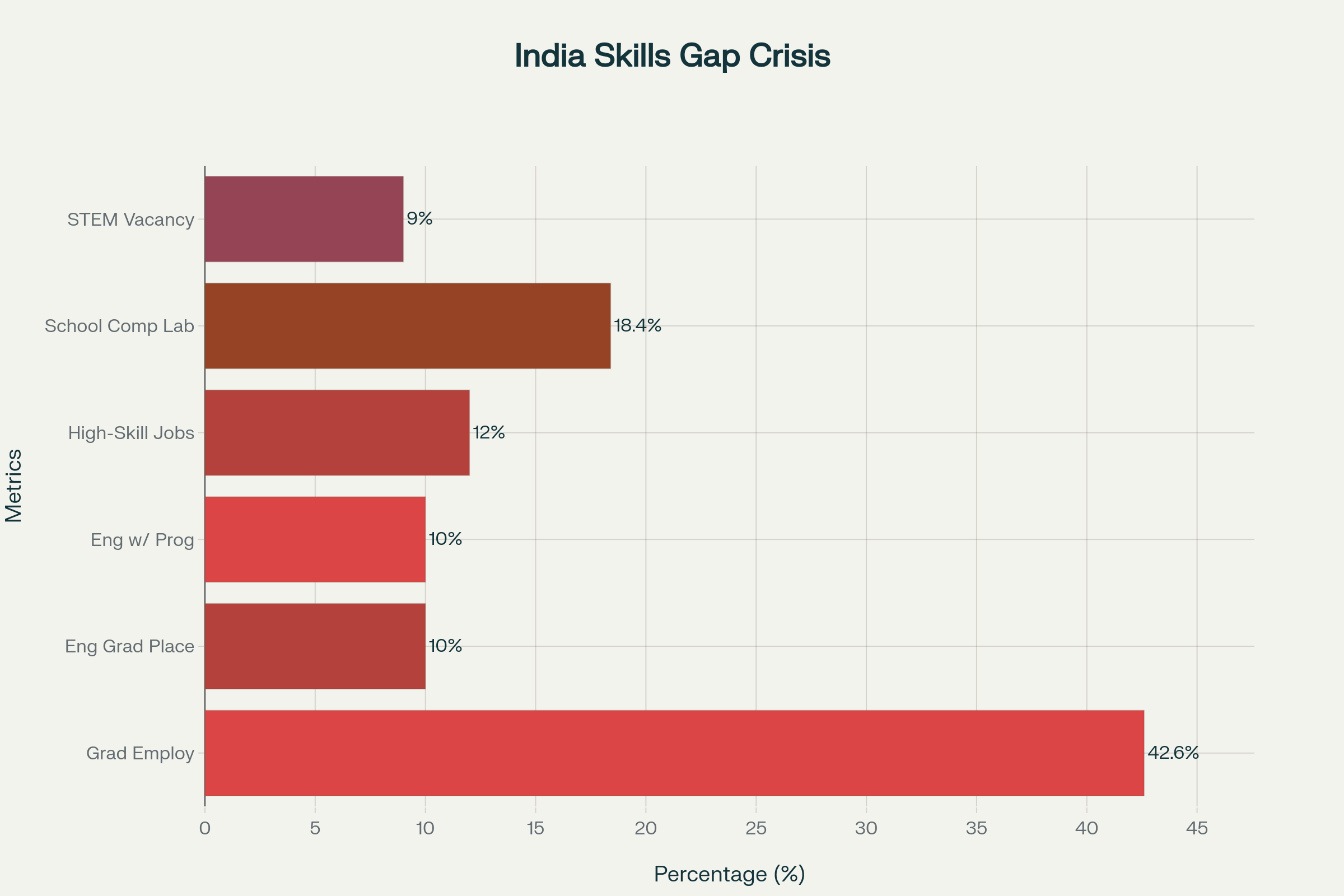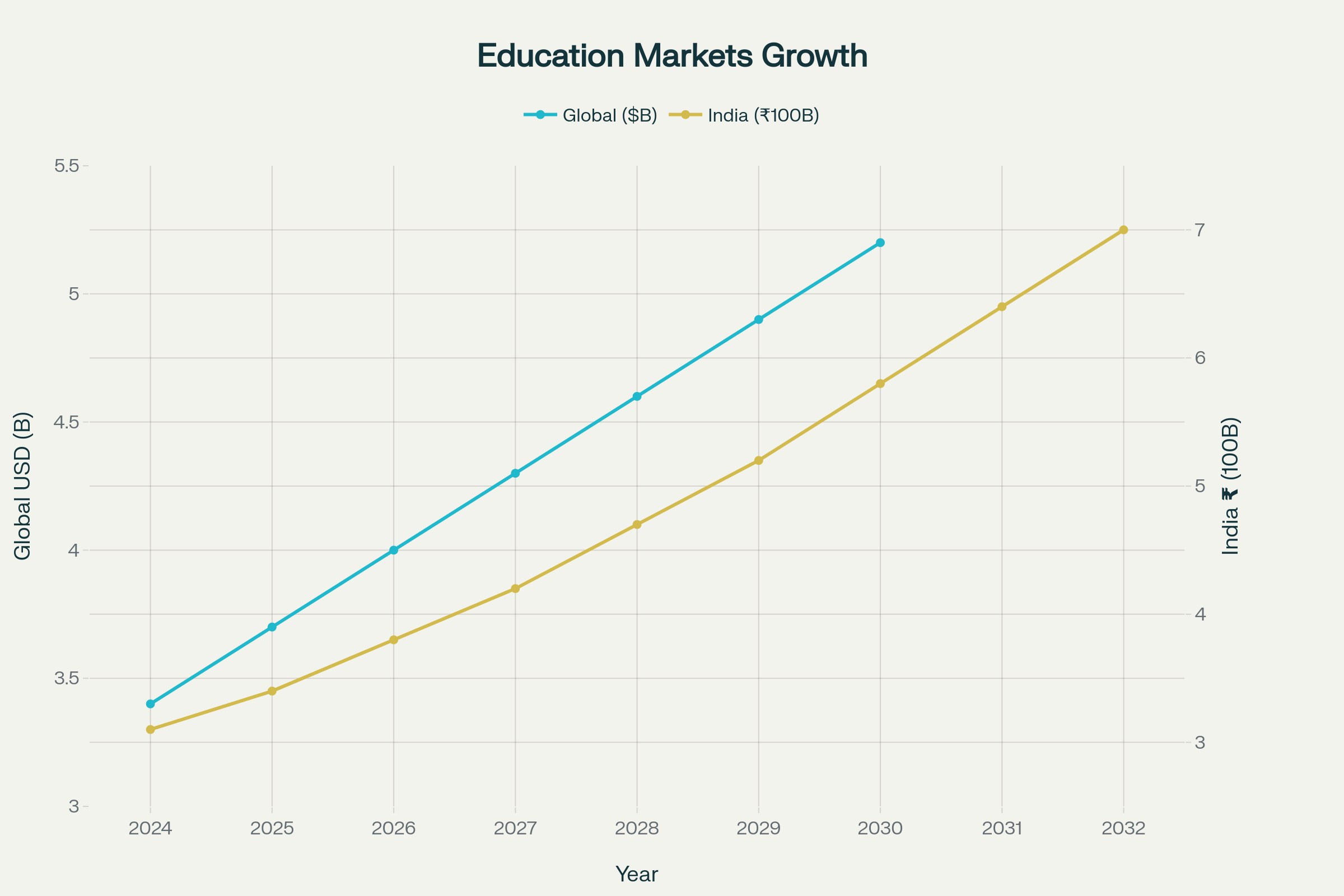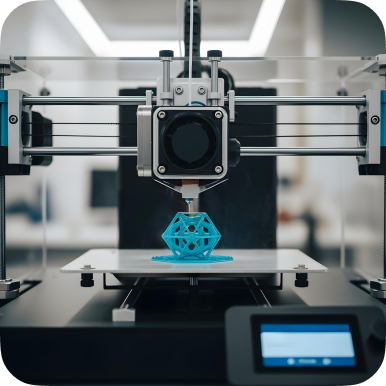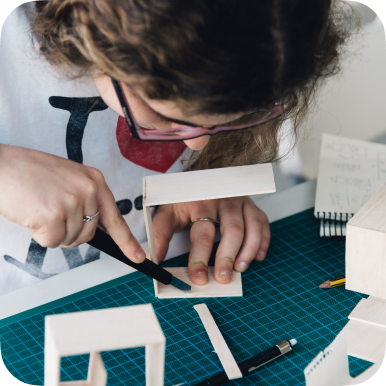75% of Indian employers struggle to hire skilled STEM workers—yet our classrooms still look like they did in 1995. This stark reality defines India’s greatest educational paradox: we produce 1.5 million engineering graduates annually, but only 10% secure employment immediately after graduation. Meanwhile, premium schools charging ₹1-4 lakh annually are scrambling to justify their fees to increasingly demanding parents who expect world-class innovation labs, not just traditional rote learning.
The answer isn’t more textbooks or higher fees—it’s composite skill labs and premium makerspaces that transform passive learners into confident innovators, preparing students for careers that don’t yet exist.
The Problem Layer: India's Education-Employment Crisis Deepens
The Employability Catastrophe
India's education system faces an unprecedented crisis. According to the Mercer-Mettl India Graduate Skill Index 2025, only 42.6% of Indian graduates are considered employable—a decline from 44.3% the previous year. More alarming:88% of India's workforce remains trapped in low-competency jobs while only 10-12% occupy high-skill roles that drive innovation and economic growth. The infrastructure gaps are equally stark. The Annual Status of Education Report (ASER 2022) revealed that only 18.4% of surveyed schools have functional computer labs, while over 9% of STEM teacher positions remain vacant—rising to 25% in states like Jharkhand and Assam. In Delhi, Mumbai, and Bangalore, parents paying ₹1-4 lakh annually are questioning whether their children are truly prepared for the future.
NEP 2020's Promise vs. Reality
The National Education Policy 2020 promised a shift toward experiential learning, critical thinking, and hands-on problem-solving. However, implementation remains patchy across states due to infrastructure deficits, teacher training gaps, and resistance to change from traditional learning models. Even well-intentioned initiatives like Atal Tinkering Labs (ATLs) face significant limitations:
- Resource constraints: ATLs receive ₹20 lakh over five years, insufficient for premium equipment and ongoing maintenance.
- Teacher capacity gaps: Many ATL in-charges lack advanced technical training.
- Curriculum misalignment: Limited integration with board exam requirements reduces student engagement.
- Scale limitations: Only 10,000 ATLs are operational across 722 districts, serving a fraction of India's educational needs.
The Opportunity Layer: Global Benchmarks and Market Forces Converge
International Excellence in STEM Education
Singapore's Strategic STEM Leadership: Singapore International School Hong Kong features bespoke amphitheatre-style Physics-Makerspace laboratories with generous worktop space for inquiry-based learning. The Science Centre Singapore's Digital Fabrication Space has become a dynamic gateway to STEM education, enabling students to acquire the "STEM Mindset" through hands-on prototyping and product development.
UAE's Innovation Push: Dubai International Private School established comprehensive STEM labs in 2022, equipped with drones, robotics kits, and 3D printing technology. Their students participate in First LEGO League competitions and the STEM Ambassador Program sponsored by Boeing, creating pathways to aerospace engineering careers. ATLAB Dubai has transformed Middle Eastern education by shifting focus "from teaching to learning," resulting in marked improvement in student motivation and technical competency.
US Market Momentum: The global K-12 makerspace materials market is projected to reach $5.2 billion by 2030, growing at 7.3% CAGR, driven by increased STEM education focus and technology accessibility. American schools report that makerspaces foster 21st century skills including creativity, collaboration, and critical thinking while preparing students for rapidly evolving workforce demands.
India's Premium Education Boom
India's premium K-12 market presents extraordinary opportunity. Valued at ₹310 billion in 2024, the sector is projected to reach ₹700 billion by 2032—representing 11% annual growth. This growth is driven by:
- Rising parental aspirations: 72% of Indian parents value STEM education for their children, while 67% prioritize cultural and moral development.
- Fee tolerance in tier-1 cities: Parents are paying ₹1-4 lakh annually, with top schools like DPS RK Puram charging ₹1.09 lakh tuition plus ₹25,200 admission fees.
- Global benchmark pressure: International schools like Harrow and Wellington College have launched in India, intensifying competition.
The Proof Layer: Makerspaces Deliver Measurable Impact
Skills Development That Works
Research consistently demonstrates makerspace effectiveness in developing 21st century competencies. Students engaged in maker-centered learning show improved performance in:
- Innovation and creativity: Design thinking methodologies foster original solution development.
- Collaboration and communication: Cross-disciplinary projects build essential teamwork skills.
- Problem-solving resilience: Iterative prototyping develops anti-frustration competency.
- Technical literacy: Hands-on experience with 3D printing, robotics, and programming bridges theory-practice gaps.
Addressing the AI Skills Crisis
India faces a 51% gap in AI talent with demand for 1 million AI professionals by 2026. The World Economic Forum projects 60% growth in AI skills demand by 2030, alongside 35% increases in digital competencies. Premium makerspaces equipped with AI curricula, robotics platforms, and coding environments prepare students for these high-growth sectors.
Amazon Future Engineer's Bengaluru Makerspace demonstrates scalable impact: the 3,000-square-foot facility will empower over 4,000 young minds by 2025 through hands-on robotics, AI, and 3D printing programs. Students develop crucial skills in coding, design thinking, and collaborative problem-solving.[31]
The Makerspace Advantage Over Traditional Labs
Unlike conventional computer labs or science labs, composite skill labs integrate multiple disciplines—combining electronics, mechanical design, coding, and creative arts. This interdisciplinary approach mirrors real-world innovation environments while fostering the "maker mindset" that successful entrepreneurs and innovators share.
"Makerspaces were initially lauded for their role in stimulating interest in STEM fields, but now they are often viewed as conduits to STEAM education with more emphasis on the humanities, visual arts, dance, drama and other areas of the arts."
The Visionary Layer: Makerspace Masters as Category Creator
Redefining Educational Infrastructure
Makerspace Masters isn't simply installing equipment—we're architecting learning ecosystems that transform students from passive recipients to active creators. Our approach recognizes that space is a silent teacher, carefully curating environments that spark curiosity, ignite creativity, and encourage student agency.
Our Masters+ franchise model enables scalable transformation across India's premium school landscape. Unlike traditional vendors, we provide:
- Comprehensive ecosystem design: From flexible learning zones to creative collaboration corners.
- Integrated technology platforms: Industry-relevant tools ensure students develop future-ready confidence.
- Curriculum alignment: Seamless integration with CBSE, IB, and state board requirements.
- Ongoing community support: Access to our global network of educators and innovators.
The Economic Imperative
International Excellence in STEM Education
With India needing to create 5 lakh non-farm jobs annually until 2030, schools investing in premium innovation labs position themselves at the forefront of educational transformation. Parents increasingly demand return on investment beyond academic scores-they want graduates who can navigate uncertainty, solve complex problems, and create value in a VUCA world.[7]
Looking Forward: The Innovation Education Revolution
The convergence of parental expectations, market forces, and technological advancement creates an unprecedented opportunity for visionary school leaders. Premium makerspaces represent more than infrastructure investment-they're strategic positioning for the future of education.
Schools that embrace this transformation will attract top talent, command premium fees, and most importantly, deliver graduates prepared for careers that don't yet exist. The choice is clear: evolve or risk irrelevance in India's rapidly transforming educational landscape.
